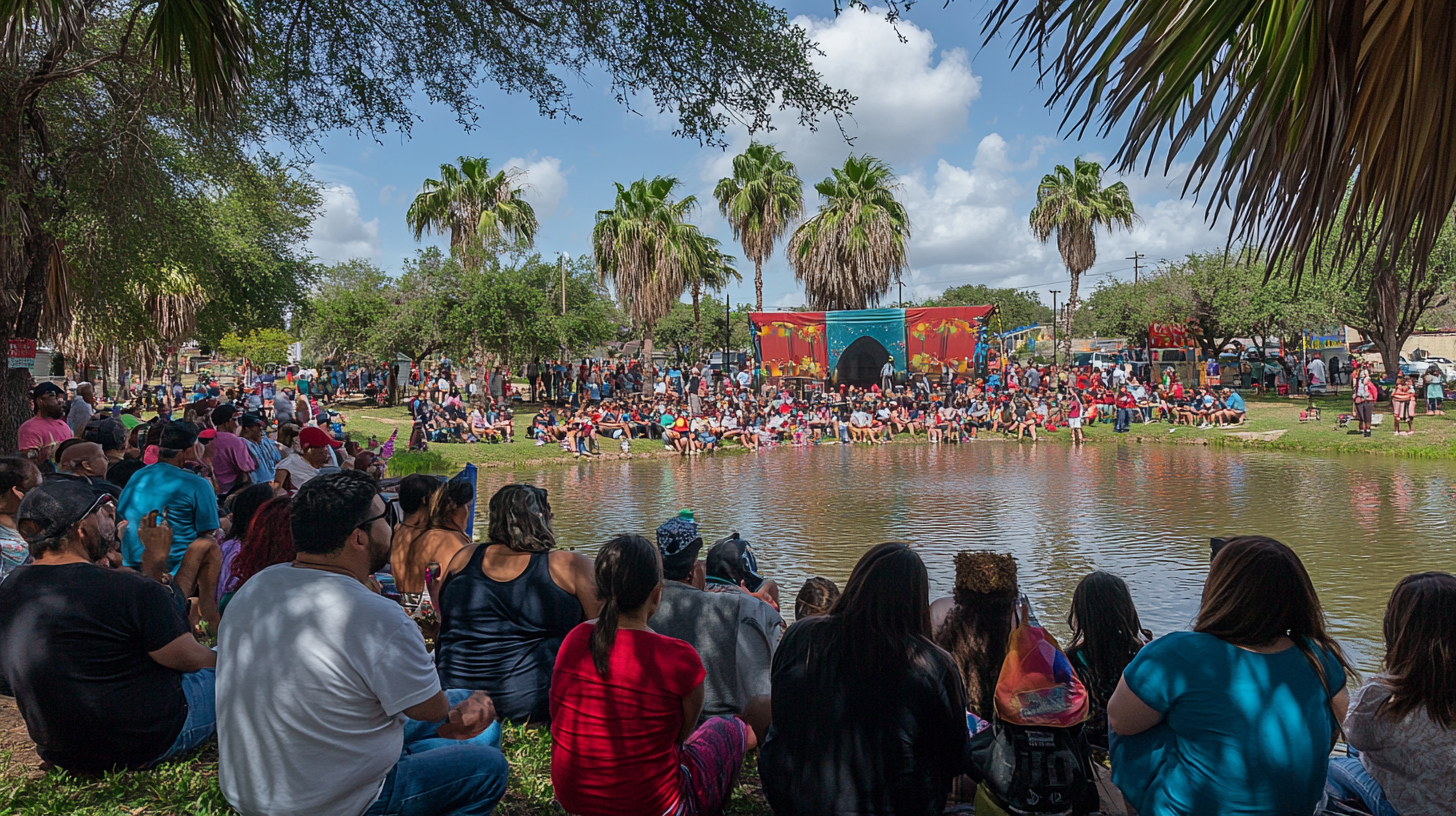Dry Weather Conditions May Mean More Alligator Sightings Across the Valley
As spring approaches, the Rio Grande Valley (RGV) community is bracing for a surge in alligator sightings due to predicted dry weather conditions. Experts warn that the lack of rainfall and increasing temperatures could prompt these reptiles to venture far from their usual habitats in search of water, affecting residents throughout South Texas.
Sightings on the Rise: Stormy’s Rescue
The prediction comes in the wake of a notable event involving Stormy, a female alligator recently rescued after spending over a month trapped in a storm drain in Weslaco. Stormy’s story captured local attention, highlighting the risks posed by shifting weather patterns. Safely relocated to the South Padre Island Birding Nature and Alligator Sanctuary, she’s emblematic of a broader trend, where alligators are emerging in unconventional settings.
“We tend to see an uptick in sightings when conditions are exceptionally dry,” said Jake Reinbolt, a wildlife handler at the sanctuary. He explained that these conditions can lead alligators to wander from the sheltered coastal and resaca areas they’re typically associated with, often resulting in unexpected appearances in more developed areas.
Community Impact
For the residents of the RGV, the increased presence of alligators could translate to heightened caution, especially in rural locations or areas near waterways. Rick Zuniga, a resident of Rio Hondo, shared his own experience with unexpected alligator encounters during a previous dry season. “It’s totally unusual for us,” he remarked, underscoring how local wildlife adaptations can disrupt everyday life for Valley residents.
In areas with prominent canal systems, such as towns bordering the Rio Grande, locals are particularly encouraged to stay vigilant. With weather forecasts predicting dry conditions and temperatures soaring into the 80s, these sightings are expected to become more frequent.
Weather Forecast and Safety Measures
The current forecast for March 16-18 indicates a continuation of dry conditions, heightening the risk of wildfires in the region and prompting concerns about the broader environmental impact. In light of these developments, authorities are urging the community to remain alert and take safety measures when spotting wildlife.
“If you encounter an alligator or any wildlife in an unusual place, it’s crucial to maintain a safe distance and contact a game warden or local authorities,” Reinbolt advised. This guidance aims to prevent accidents while ensuring that animals can safely return to their habitats, contributing to a balanced coexistence within the community.
Learning from the Past: A Regional Challenge
Historically, the RGV has dealt with various challenges tied to its climate and geography, from dealing with hurricane impacts to managing water scarcity. The current uptick in alligator sightings serves as a reminder of the intricate relationships between the ecosystem and human activity in South Texas.
As the Valley’s communities grow and expand, balancing developmental priorities with environmental stewardship becomes increasingly critical. Local efforts, such as Weslaco’s upcoming Texas Onion Fest, serve not only to celebrate the region’s agricultural heritage but also highlight the importance of sustainable practices that benefit both people and wildlife.
Looking Ahead: Preparing for the Future
Moving forward, understanding and mitigating the effects of climate variation will be essential for Valley residents. Programs aimed at environmental education and preservation can provide essential insights, equipping individuals with knowledge crucial for navigating these changes.
Local agencies and wildlife organizations are expected to continue playing vital roles in managing these challenges. By offering resources and support, they aim to foster harmonious relations between human communities and the rich biodiversity found in the area.
For further assistance or to report alligator sightings, community members are encouraged to contact the South Padre Island Birding Nature and Alligator Sanctuary or their local wildlife officials. Reinforcing collaborations among environmental groups, civic bodies, and the public at large remains key to fostering a proactive approach toward wildlife management and conservation in the RGV.
In summary, the forecasted dry weather conditions in the Rio Grande Valley bring an emerging risk of increased alligator sightings, prompting safety advisories for local residents. As this situation unfolds, it underscores broader regional dynamics, emphasizing the importance of adaptability and community engagement in navigating these evolving environmental challenges.







